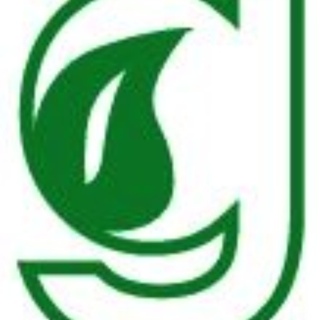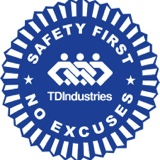Information
-
Audit Title
-
Client / Site
-
Conducted on
-
Prepared by
-
Location
-
Personnel
1. Working at Heights
-
1.1. Fall Risks - Workers are protected from falls greater than 6 feet?
-
1.2. Lack of edge protection?
-
1.3. Fall Distance in acceptable range?
-
1.4. Anchorage inspected and proper?
-
1.5. Is a controlled access zone required? If so, is the warning line, signage and personal fall arrest system in place?
-
undefined
2. Small Tools and Equipment
-
2.1. Unsafe or damaged small tools or equipment? (including missing or damaged guards)
-
2.2. Incorrect small tools /equipment for job? (e.g. grinding discs for cutting)
-
2.3. Unsafe or incompatible attachments used with small tools /equipment?
-
2.4. Unlicensed operators?
-
2.5. Lack of safe work instructions?
-
2.6. Lack of training in safe operation, clean-up and maintenance?
-
2.7. Lack of inspection?
-
undefined
3. Scaffolds
-
3.1. Unsafe or incomplete scaffold? If so, is it tagged accordingly.
-
3.2. Lack of inspection protocol for scaffold? Is the scaffold tagged as non use, or have inspection log?
-
3.3. Incompatible scaffold components? Unlabelled or do not meet AS?
-
3.4. Safe Work Load (SWL) exceeded? (tools, stored materials, number of persons)
-
3.5. Suspended scaffold. Tie backs Directly behind support system, within 15 to 20°, or to tiebacks at opposing angles?
-
3.5 Suspended Scaffold. Counterweights. Are the correct number of counterweights on the support system?
-
3.6. Suspended scaffold. Fall arrest. Are vertical lifelines protected and edges and secured to a proper anchor point?
-
3.7. Suspended scaffold. Components. Are all pieces properly secured with correct components?
-
3.8. Suspended scaffold. Rigging. Are all cables in good condition?
-
-
4. Lifting Equipment
-
4.1. Unsafe or damaged equipment?
-
4.2. Loads lifted over persons, close proximity to obstacles incl. overhead power lines?
-
4.3. Lack of maintenance, testing and inspection?
-
4.4. Lack of SWL information displayed?
-
4.5. Lack of daily inspection protocol?
-
4.6. Unsafe or damaged lifting equipment, including ropes, slings, chains, hooks?
-
4.7. Lifting equipment unlabelled, does not meet AS, no SWL displayed?
undefined
-
-
4.8. Qualified Riggers and Signalpersons?
-
4.9. Are area’s with overhead hazards barricaded off,to prevent other trades from entering?
-
4.10. Are underground utilities present? If so, are location marked?
5. Harness and Equipment
-
5.1. Unsafe or damaged harness or equipment?
-
5.2. Incompatible hooks/equipment?
-
5.3. Unlabelled or does not meet AS?
-
5.4. Unsafe or uncertified anchor points?
-
5.5. Lack of inspection protocol for equipment?
-
5.6. Retractable lanyard inspection
6. Ladders
-
6.1. Unsafe or damaged ladders?
-
6.2. Unsafe positioning or use of ladders?
-
6.3. Ladder not properly secured?
-
6.4. Ladder unsuitable for job? (e.g. metal ladder used for electrical work)
7. Hazardous Manual Tasks
-
7.1. Lack of identification hazardous manual tasks?
-
7.2. Lifting hazards identified and addressed.
-
7.3. Inadequate risk controls? (examples: no job rotation, lighter loads, trolleys, lifting equipment, etc)
-
7.4. Stretch and Flex Program being conducted daily?
8. Hazardous Chemical (including fuel and oil)
-
8.1. Unsafe storage location? (e.g. flammables near ignition sources, spills could enter stormwater drains, etc)
-
8.2. Incompatible chemicals stored near each other?
-
8.3. Inadequate spill containment equipment?
-
8.4. Safety Data Sheets not accessible on site?
-
8.5. Lack of emergency procedures for injury/spills/fire etc?
-
8.6. Excessive quantities stored on site or in vehicles?
-
8.7. Insufficient ventilation?
-
8.8. Insufficient, or incorrect, PPE?
-
8.9. Unsuitable storage containers? (unlabeled or stored in food containers)
9. Emergency Response
-
9.1. Medical Facilities Determined for Injuires?
-
9.2. Lack of, or inadequate first aid kits aid equipment for site?
10. Traffic Management
-
10.1. Lack of, or inadequate, Traffic Management Plan (TMP) in place?
-
10.2. Lack of training in TMP for all persons on site? <br>(contractors and visitors)
-
10.3. Inadequate controls for TMP? (physical barriers, bollards, speed limits, flashing lights, spotters, etc)
11. Personal Protective Equipment (PPE)
-
11.1. Lack of, or inadequate PPE (including sun protection), hardhats, eye glasses, safety vests/ colors, long pants, masks, gloves, etc.
-
11.2. Lack of system to issue, inspect, replace and monitor PPE?
-
11.3. Lack of training in safe use, clean-up and inspection of PPE?
-
11.4. COVID-19 PPE being worn? Face covering/mask and gloves.
12. Work Environment
-
12.1. Lack of/or inadequate amenities? (toilets, wash areas, lunch rooms, etc)
-
12.2. Insufficient lighting?
-
12.3. Inadequate housekeeping? Is the job-site (inside and outside) clean and organized?
-
12.4. Lack of, or inadequate noise/ vibration control?
-
12.5. Lack of fire watch?
-
12.6. Has flammable and combustible materials been removed from working area where hot work is taking place? This includes areas below where slag or sparks could fall.
13. Electrical Hazards
-
13.1. Unsafe electrical leads/ cords? (damaged, out of test date or untested)
-
13.2. Lack of Ground fault protection?
-
13.3. Electrical leads on work surfaces?
-
13.4. Contact with overhead electrical lines?
-
13.5. Overloading outlets?
-
13.6. Leads placed on ground or on metal structures?
-
13.7. Electrical equipment near water?
-
13.8. Electrical equipment near flammables?
-
13.9. Electrical equipment near chemicals that could cause damage?
-
13.10. Electrical leads that may be damaged from contact with moving machinery parts?
-
13.11. Lack of Lock-out/tag-out (LOTO) procedures for electrical equipment?
14. Environmental Hazards
-
14.1. Spill Containment procedures in place.
-
14.2. Lack of/or inadequate, dust suppression system?
-
14.3. Lack of/or inadequate systems to prevent contaminants entering stormwater drains?
15. Administrative Procedures
-
15.1. Lack of/or inadequate Site Safety Plan?
-
15.2. Failure to obtain permits (Council, EPA, WHS, also Hot Works, Confined Space etc)
-
15.3. Lack of, or inadequate, routine inspections, monitoring, audits?
-
15.4. Lack of, or inadequate, supervisory arrangements? Do you need input and help from your project manager?
-
15.5. Lack of/or inadequate training, licenses, skills, experience? Does anyone on the project need training, licensing, or put on notice?
-
15.6. Lack of/or inadequate Safe Work Method Statements (SWSM) for high- risk work? Have you prepared for and communicated the safety procedures for high risk scopes of work, I.e. steel erection?
-
15.7. Lack of/or inadequate incident notification procedures?
-
15.8. Are weekly toolbox meetings being documented and conducted?
-
15.9. Are daily pre task plans being filled out and discussed each morning?
16. Aerial lift operation
-
16.1. Are pre use inspections documented?
-
16.2. Is the safe work load of the lift being exceeded?
-
16.3. Are operators and occupants properly wearing harnesses and tied off to certified anchor points (doesn’t apply to scissor lifts unless general contractor requires it)?
-
16.4. Are lifts operated on a level surface?
-
16.5. Are all operators of aerial lifts certified and authorized to operate?
-
16.6. Is material on glass rack secured to the lift basket (applies only to boom lifts)?
-
16.7. Are areas below flagged off with danger tape and signage to prevent other trades from entering?
-
16.8. Any unsafe operations of lifts observed?
Corrective Actions
-
Enter any corrective actions that will be undertaken. Take pictures of some of the safe and at-risk items as part of this report.
Sign Off
-
Name of anyone onsite that was notified of unsafe work practices as part of this audit.
-
Auditor's signature
-
-
-










